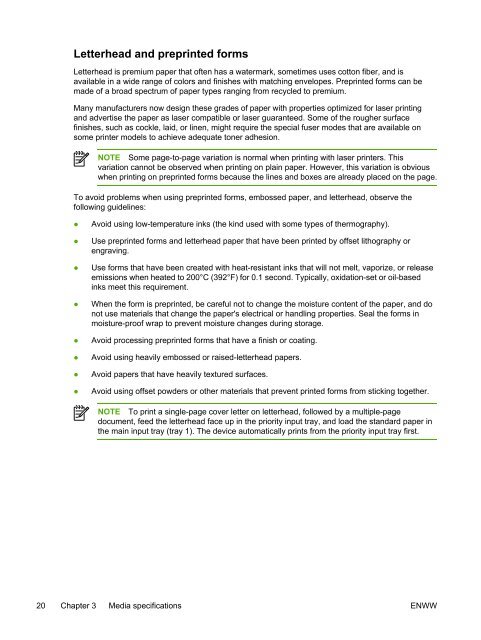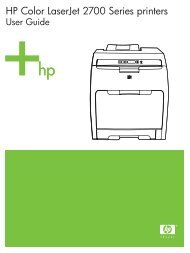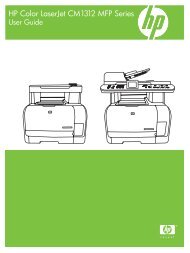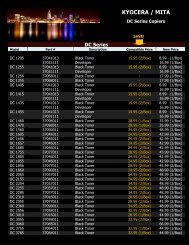HP LaserJet M1005 MFP user guide - ENWW
HP LaserJet M1005 MFP user guide - ENWW
HP LaserJet M1005 MFP user guide - ENWW
Create successful ePaper yourself
Turn your PDF publications into a flip-book with our unique Google optimized e-Paper software.
Letterhead and preprinted forms<br />
Letterhead is premium paper that often has a watermark, sometimes uses cotton fiber, and is<br />
available in a wide range of colors and finishes with matching envelopes. Preprinted forms can be<br />
made of a broad spectrum of paper types ranging from recycled to premium.<br />
Many manufacturers now design these grades of paper with properties optimized for laser printing<br />
and advertise the paper as laser compatible or laser guaranteed. Some of the rougher surface<br />
finishes, such as cockle, laid, or linen, might require the special f<strong>user</strong> modes that are available on<br />
some printer models to achieve adequate toner adhesion.<br />
NOTE Some page-to-page variation is normal when printing with laser printers. This<br />
variation cannot be observed when printing on plain paper. However, this variation is obvious<br />
when printing on preprinted forms because the lines and boxes are already placed on the page.<br />
To avoid problems when using preprinted forms, embossed paper, and letterhead, observe the<br />
following <strong>guide</strong>lines:<br />
● Avoid using low-temperature inks (the kind used with some types of thermography).<br />
● Use preprinted forms and letterhead paper that have been printed by offset lithography or<br />
engraving.<br />
● Use forms that have been created with heat-resistant inks that will not melt, vaporize, or release<br />
emissions when heated to 200°C (392°F) for 0.1 second. Typically, oxidation-set or oil-based<br />
inks meet this requirement.<br />
● When the form is preprinted, be careful not to change the moisture content of the paper, and do<br />
not use materials that change the paper's electrical or handling properties. Seal the forms in<br />
moisture-proof wrap to prevent moisture changes during storage.<br />
● Avoid processing preprinted forms that have a finish or coating.<br />
● Avoid using heavily embossed or raised-letterhead papers.<br />
● Avoid papers that have heavily textured surfaces.<br />
● Avoid using offset powders or other materials that prevent printed forms from sticking together.<br />
NOTE To print a single-page cover letter on letterhead, followed by a multiple-page<br />
document, feed the letterhead face up in the priority input tray, and load the standard paper in<br />
the main input tray (tray 1). The device automatically prints from the priority input tray first.<br />
20 Chapter 3 Media specifications <strong>ENWW</strong>


